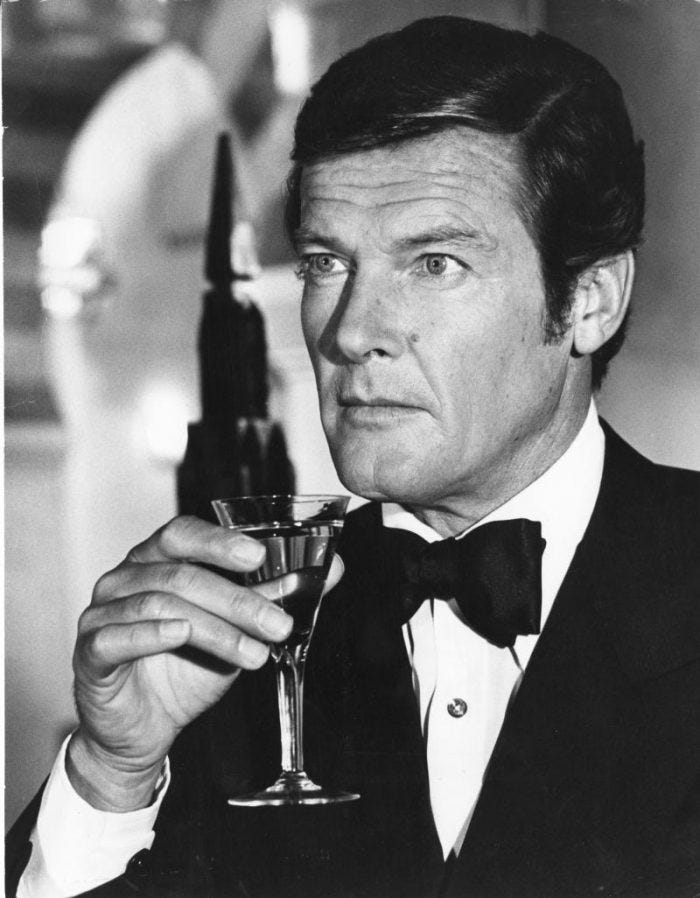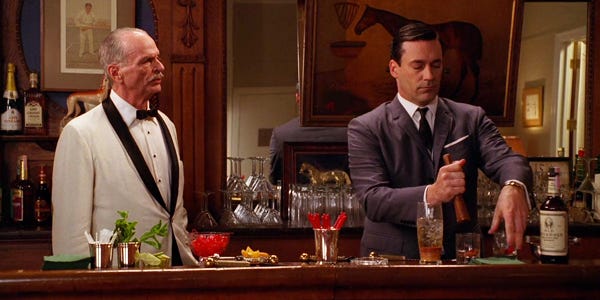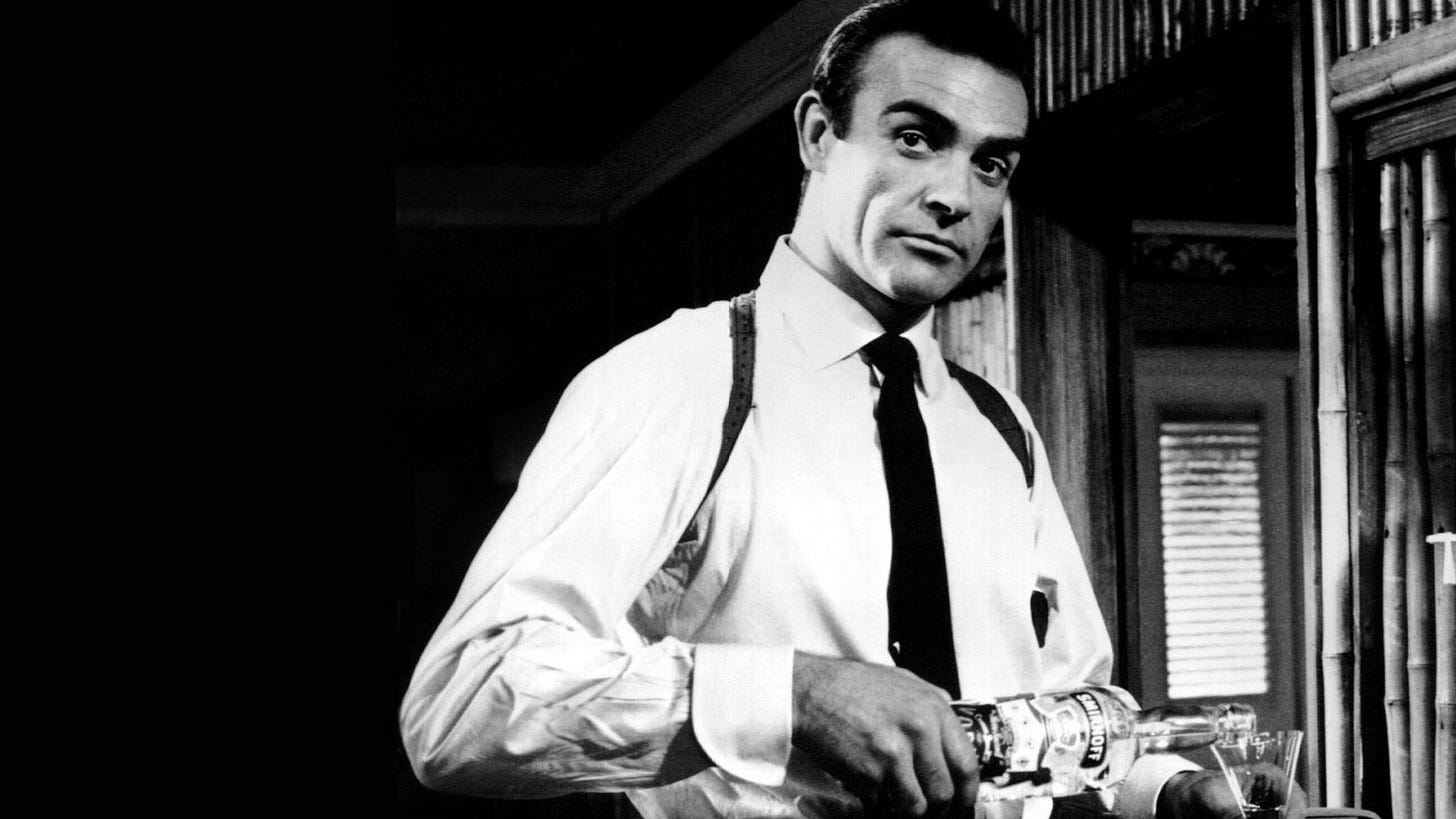The Lost Ritual of Drinking
On Cocktails, Culture, and the Art of Being Present
Drinking – the term that directly associates with alcoholic beverages…
A thing that leads to nothing but the destruction of one’s life.
This has become a doctrine of mine since childhood – either from seeing people around me get wasted when they drank the yellow carbonated liquid (A.K.A. a beer), or from a PR campaign by the Thai health government about the ‘danger’ of alcohol.
Yet, just like any other teenager with a rebellious nature – I sought a glass of beer or scotch & soda since my teenage years…
However, I came to a quick realization that these beverages did nothing great for me – both physically and mentally.
Back then, during my late teens to early twenties, I rejected and criticized the drinking culture, seeing it as a degenerate way of life.
Which I still do believe to this very moment – though now I’m about to talk about the art of drinking itself.
What has gone wrong about alcohol (apart from the fact that it’s an addictive substance in the first place) – is the way people use it.
In most cases, whenever you walk through the metropolis or visit a certain nightclub – you’ll see the masses of hedonism. The hyper-consumption of alcohol for the sake of letting it ‘take over’ their consciousness and escape the reality of their lives.
An act that leads to undesirable consequences such as tragic road accidents or regrettable actions many wish they’d never done.
Now, what I want to convey is not another social PR campaign about ‘the negatives of drinking alcohol’ – but to give you another side of paradise.
Alcohol, just like any other addictive substance – such as caffeine, nicotine, or even sugar – has its downsides (especially with heavy consumption).
But whenever a man or woman treats it not for the sake of its effects but as a deliberate act of tasting, experiencing, and appreciating the art of consumption – it can add culture, intellect, and substance to life.
To put it more precisely: drinking for the sake of escapism is not ideal – but drinking for presence and to enjoy the drink itself?
That’s the beauty of it – and no form of alcohol can beat the sophistication and experience of the drink called ‘Cocktail’.
Ritual That Modernity Seems to Have Forgotten
Back in the early to mid-20th century – there were certain types of images that provoked a sense of nostalgia and aspiration:
A private bar in the corner of a room.
The act of enjoying a glass in the evening.
All done in a civilized manner – nothing like the drinking culture we see today.
This was the art of living – a ritual that gentlemen and ladies of the bygone era cultivated as a part of life.
What’s interesting is that this went beyond mere hedonistic consumption – it was a disciplined act of allowing oneself to be introspective.
When you look at modern lifestyles – it’s all-time connected, hyper-digitalized, demanding constant attention to keep up with everything on social media.
The way of slow, deliberate living has been lost – to the nature of the digital-age environment.
Which is why reclaiming it back – with a specific ritual – is so crucial.
First, it allows you to dissect the phases of daily life – shifting from ‘active’ to ‘open,’ from conscious to unconscious. All of which makes you actually gain awareness of your thoughts and listen to yourself more deeply.
Second, this is a bypass to a brain mode known as the Default Mode Network – a network of brain regions that becomes active when a person is at rest and not focused on the outside world. This is directly associated with creativity and the generation of genius ideas that can change the trajectory of one’s life.
So… all these benefits can be accessed through the act of disconnecting from the chaos of the digital world, and retreating into peace with oneself.
And a ritual involving a glass of cocktail is the perfect medium for this.
The Brief Evolution of Cocktail Creation
The origin of the cocktail can be traced back to 1806, when the first definition of the word appeared as:
“A stimulating liquor composed of spirits of any kind, sugar, water, and bitters.”
From that defining moment – across centuries – the term evolved into a variety of recipes, and by the late 19th century, the names of the well-known classics were born:
Martini
Manhattan
Old-Fashioned
and many more…
Since then, this type of alcohol gained popularity in the U.S. and rapidly expanded across the world during the early 20th century.
But what really made cocktails into an endless realm of taste and creation was the period of the 1920s–early 1930s – known as the Prohibition Era.
This was a time when U.S. authorities banned the manufacture, sale, and transport of alcoholic beverages, aiming to reduce societal problems like domestic violence (which they believed alcohol was the cause of).
Apart from romanticized gangsters like Al Capone, the era birthed creative ways to drink in secret – giving rise to speakeasies: underground bars where people drank illegally.
And the format most famously ordered?
Cocktail.
Since proper alcohol was banned, underground production surged to meet demand – but using low-quality ingredients, lacking quality control… resulting in unpleasant (and often dangerous) alcohol.
That’s why cocktails flourished: new recipes were invented to make bad alcohol palatable by mixing it with sugar, bitters, and juices.
Also, due to restrictions in the U.S., bartenders from the land of the free traveled to Europe and the East – expanding cocktail creativity like never before.
When prohibition ended and WWII passed – cocktails were reborn into a whole new world, awaiting discovery by ladies and gentlemen.
That idea still holds true today – waiting for the modern gentleman to rediscover and appreciate.
And here’s my personal approach to this drink called cocktail – to maximize the experience while staying in control, rather than being consumed by it.
The Cocktail Savoir-Faire for a Gentleman
When it comes to cocktails, here are the things a gentleman (or any person with a discerning eye for detail) should look into to cultivate their own taste:






